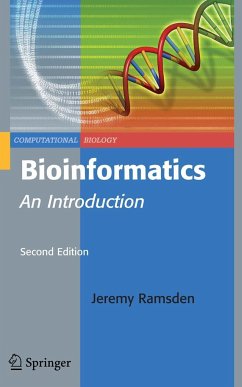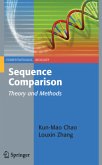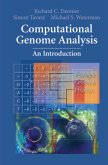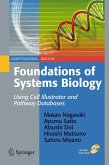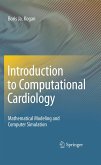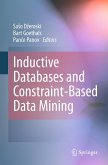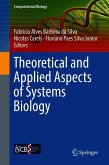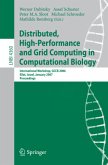Bioinformatics is interpreted as the application of information science to biology, in which it plays a fundamental and all-pervasive role. The field continues to develop intensively in both academia and commercially, and is highly interdisciplinary. This broad-ranging and thoroughly updated second edition covers new findings while retaining the successful formula of the original text.
Bioinformatics: An Introduction (2nd Edition) is structured into three parts devoted to Information, Biology, and Applications. Every section of the book has been completely revised for currency, and expanded where relevant, to take account of significant new discoveries and realizations of the importance of key concepts. Furthermore, two new chapters provide instruction about algorithms and knowledge representation. Emphases are placed on the underlying fundamentals and on acquisition of a broad and comprehensive grasp of the field as a whole.
Features:
- Provides a solid foundation in, and self-contained introduction to, the field of bioinformatics and its state-of-the-art as it relates to computational biology research
- Offers additional chapters on algorithms and knowledge representation, including text mining [NEW]
- Imparts a thorough grounding of core concepts, enabling the reader to understand contemporary work within an optimal context
- Contains a greatly expanded chapter on interactions and regulatory networks [NEW]
- Includes examples, definitions, problems and a comprehensive and useful bibliography
- Presents new experimental methods, and serves as a springboard for new research [NEW]
- Incorporates discussion of the method of drawing inferences from abstract sequence analysis based on frequency dictionaries
- Contains an extensively revised chapter on medical applications[NEW]
- Emphasizes the underlying fundamentals and acquisition of a broad and comprehensive grasp of the field as a whole
This significantly improved second edition of a successful textbook is intended to be a complete study companion for the advanced undergraduate or graduate student. It is self-contained, bringing together the multiple disciplines necessary for a profound grasp of the field into a coherent whole, thereby allowing the reader to gain much insight into the state-of-the-art of bioinformatics.
Bioinformatics: An Introduction (2nd Edition) is structured into three parts devoted to Information, Biology, and Applications. Every section of the book has been completely revised for currency, and expanded where relevant, to take account of significant new discoveries and realizations of the importance of key concepts. Furthermore, two new chapters provide instruction about algorithms and knowledge representation. Emphases are placed on the underlying fundamentals and on acquisition of a broad and comprehensive grasp of the field as a whole.
Features:
- Provides a solid foundation in, and self-contained introduction to, the field of bioinformatics and its state-of-the-art as it relates to computational biology research
- Offers additional chapters on algorithms and knowledge representation, including text mining [NEW]
- Imparts a thorough grounding of core concepts, enabling the reader to understand contemporary work within an optimal context
- Contains a greatly expanded chapter on interactions and regulatory networks [NEW]
- Includes examples, definitions, problems and a comprehensive and useful bibliography
- Presents new experimental methods, and serves as a springboard for new research [NEW]
- Incorporates discussion of the method of drawing inferences from abstract sequence analysis based on frequency dictionaries
- Contains an extensively revised chapter on medical applications[NEW]
- Emphasizes the underlying fundamentals and acquisition of a broad and comprehensive grasp of the field as a whole
This significantly improved second edition of a successful textbook is intended to be a complete study companion for the advanced undergraduate or graduate student. It is self-contained, bringing together the multiple disciplines necessary for a profound grasp of the field into a coherent whole, thereby allowing the reader to gain much insight into the state-of-the-art of bioinformatics.
From the reviews of the second edition:
"This book is a self-contained guide to bioinformatics that targets undergraduates interested in this field. Bioinformatics is an interdisciplinary field that involves computer science, engineering, biology, and medicine. This book covers the basics of these areas, so readers will acquaint themselves with the fundamental building blocks of bioinformatics. ... In short, this book is a wonderful text for entry-level students." (Hsun-Hsien Chang, ACM Computing Reviews, June, 2009)
"In the textbook under review, the author interprets the scientific field of bioinformatics in a broad manner ... . The range of topics covered by the book is impressive and these topics are structured very well by the author, giving the reader a good overview of the field and showing how the different concepts are related. ... The target audience of advanced undergraduate and graduate students will find this book useful ... to 'find out what is out there' in the field of bioinformatics." (Till Tantau, Mathematical Reviews, Issue 2012 b)
"This book is a self-contained guide to bioinformatics that targets undergraduates interested in this field. Bioinformatics is an interdisciplinary field that involves computer science, engineering, biology, and medicine. This book covers the basics of these areas, so readers will acquaint themselves with the fundamental building blocks of bioinformatics. ... In short, this book is a wonderful text for entry-level students." (Hsun-Hsien Chang, ACM Computing Reviews, June, 2009)
"In the textbook under review, the author interprets the scientific field of bioinformatics in a broad manner ... . The range of topics covered by the book is impressive and these topics are structured very well by the author, giving the reader a good overview of the field and showing how the different concepts are related. ... The target audience of advanced undergraduate and graduate students will find this book useful ... to 'find out what is out there' in the field of bioinformatics." (Till Tantau, Mathematical Reviews, Issue 2012 b)
"The book gives short introductions to many topics, providing an overview of the field and leading readers to pursue specific areas as necessary. It can serve as an excellent supplement to a textbook used in bioinformatics or computational biology courses. The audience is advanced students with backgrounds in fields associated with bioinformatics, such as genetics, biostatistics, and computer science. Summing Up: Recommended. Upper-division undergraduates and graduate students." (M. C. Pavao, Choice, Vol. 53 (11), July, 2016)

